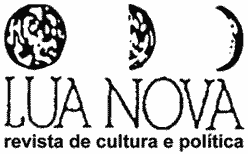Abstract
In this article, we compare the different organizational strategies of interest groups in the areas of Education, Health and Work, during the constitutional process of 1987-88. We adapted the theories of lobbying coalition and social network graphs to emphasize the element of political cohesion and stability of the networks’ central groups. We argued that the lobby was translated into the division between two types of interest groups, defined by the relationship that they maintained in their areas of interest. This dynamic constitutes a theoretical model defined by the tendency of centralization of interests in a single group, which represented all other groups and, which aggregating capacity, played as the main variable in determining the political strength of the interests defended and, consequently, in the success of the lobby. The results confirmed the hypothesis, but showed that the influence of this variable is determined by the composition of the relations between the groups, analyzed by social network graphs.
Keywords:
Lobby; Education; Health Care; Labor; Constitutional Drafting; Social Network Analysis

 Thumbnail
Thumbnail
 Thumbnail
Thumbnail
 Thumbnail
Thumbnail
 Fonte: Elaboração própria.
Fonte: Elaboração própria.
 Fonte: elaboração própria com auxílio do software Cytoscape (versão 3.4).
Fonte: elaboração própria com auxílio do software Cytoscape (versão 3.4).
 Fonte: elaboração própria com auxílio do software Cytoscape (versão 3.4).
Fonte: elaboração própria com auxílio do software Cytoscape (versão 3.4).